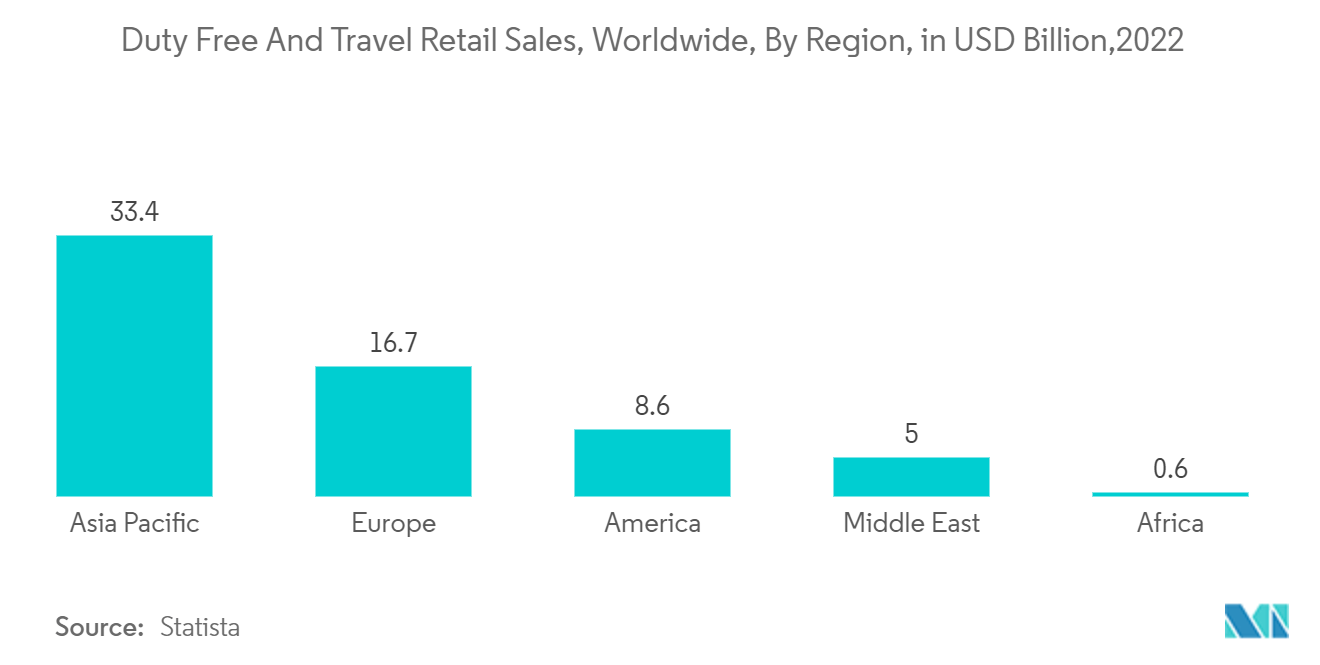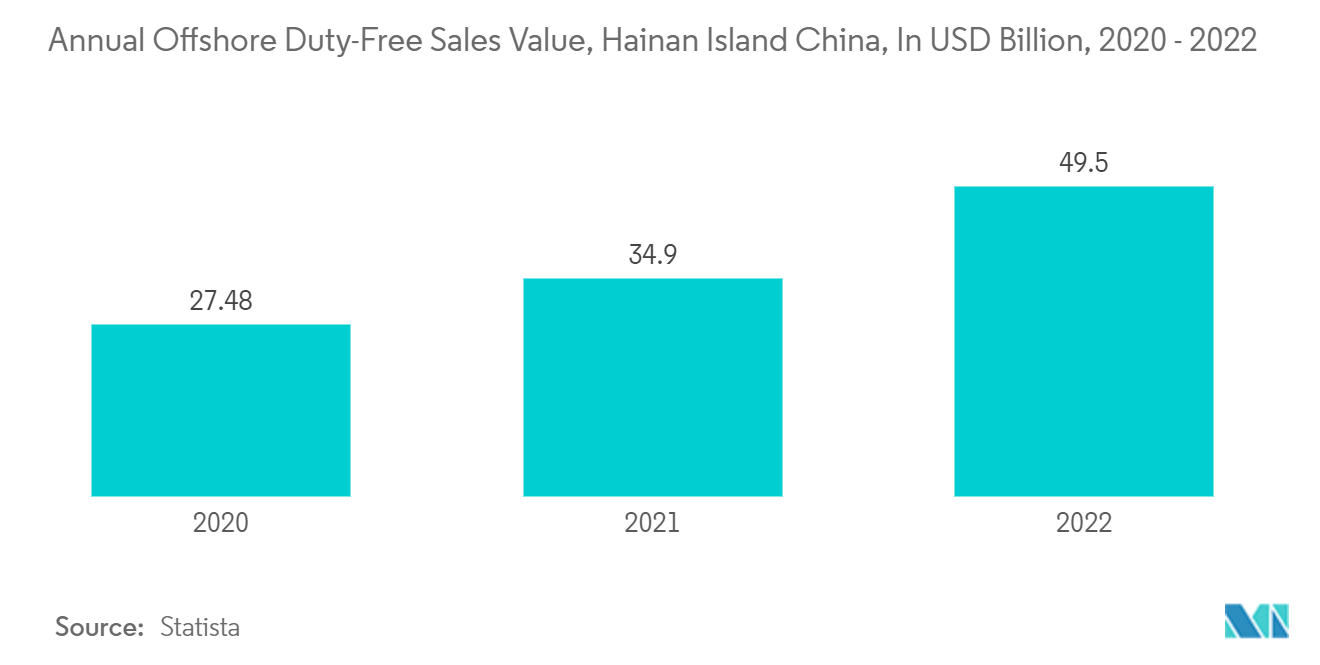Market Trends of Asia-Pacific Travel Retail Industry
High Revenue Generation From Airport Retailing Drives The Market
The primary factor driving the travel retail market in the Asia-Pacific region is the increasing growth of the tourism sector. Many foreign investors visit countries like Hong Kong and Malaysia for tax-free shopping. The airport became a vital retail channel for brands to promote and create product awareness among customers. Airports are branching out the business to segments like retail, restaurant bars, and cafeterias. 60% of commercial income gained by the airport owners is through airport retail and commercial services, including food and beverage. It contributes to direct investments in Asia-Pacific's aviation infrastructure and increases the development of the Asia-Pacific retail market.

China Dominates The Market
The travel retail industry in China is growing due to the rising demand for tourism, luxury goods, and cosmetics. Apart from this, the industry is getting massive support from the government in Hainan province to boost industry growth. Due to the benefits gained from globalization and steady traffic growth, the travel retail market became attractive in China. To achieve the government's aim of developing a special economic zone or a tourist destination in Hainan, china brought overseas consumption back to its domestic market. Thus, China dominates the travel retail market in the Asia-Pacific region.

